There are a
number of rules which govern the size of these, the most important being size
restrictions and not being able to have a bedroom; however, a Murphy or
Hide-a-bed of some kind is acceptable.
and
people are super-friendly. There is one large Recreation Hall in the centre
with a library, several multi-use rooms and a kitchen. There is a Happy Hour
every day at 4pm. Unfortunately, we were rarely back from our day’s adventures
that early. Our first evening we decided to have dinner at
, a relatively new local Mexican restaurant. The food was
excellent. I had always avoided the green sauce, as it was usually too hot, but
this had just the right balance of cilantro and heat!
some in
groups of ten or thirty or more,
 |
| The sky was full |
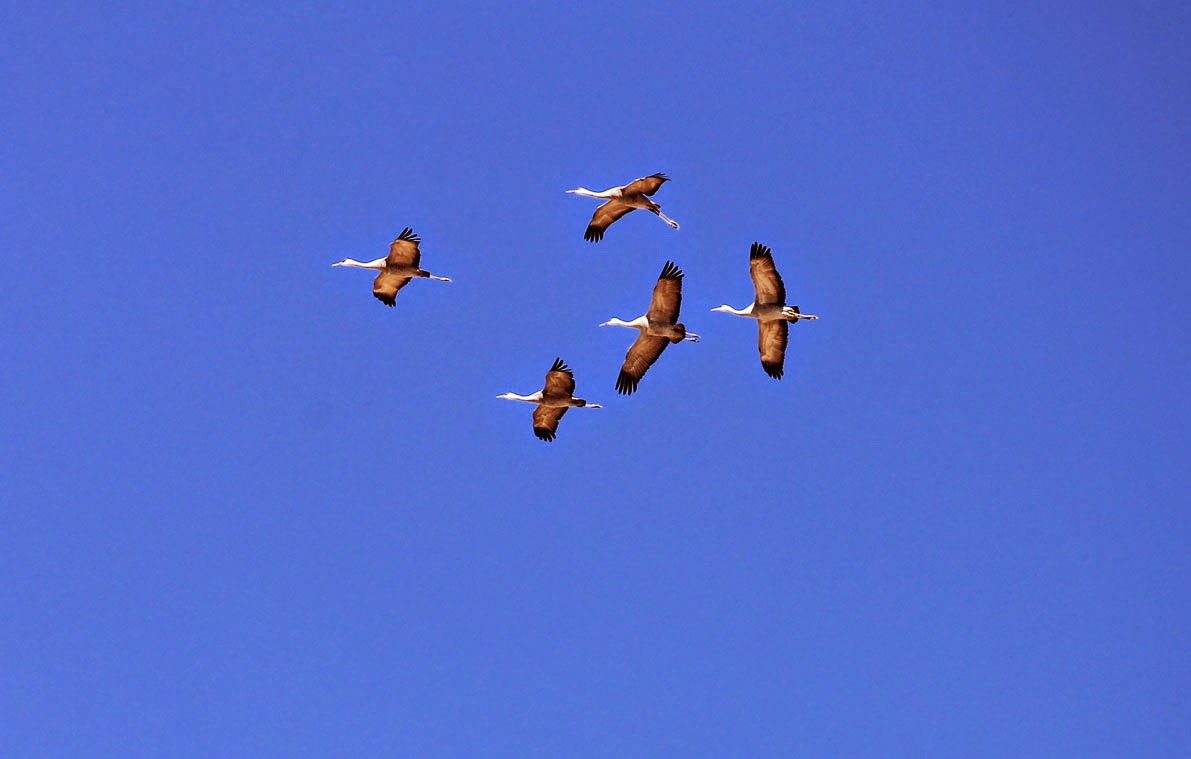 |
| They swooped over us |
 |
| And landed feet first... |
flying
towards us, swooping in wide arcs, then landing in one of a several
sections of the edge of this muddy, marshy Draw. They stand in the shallow
water, safe from predators.
 |
| The opposite shore |
When we got there at 11am, there were about 20
birds in one group. By noon,
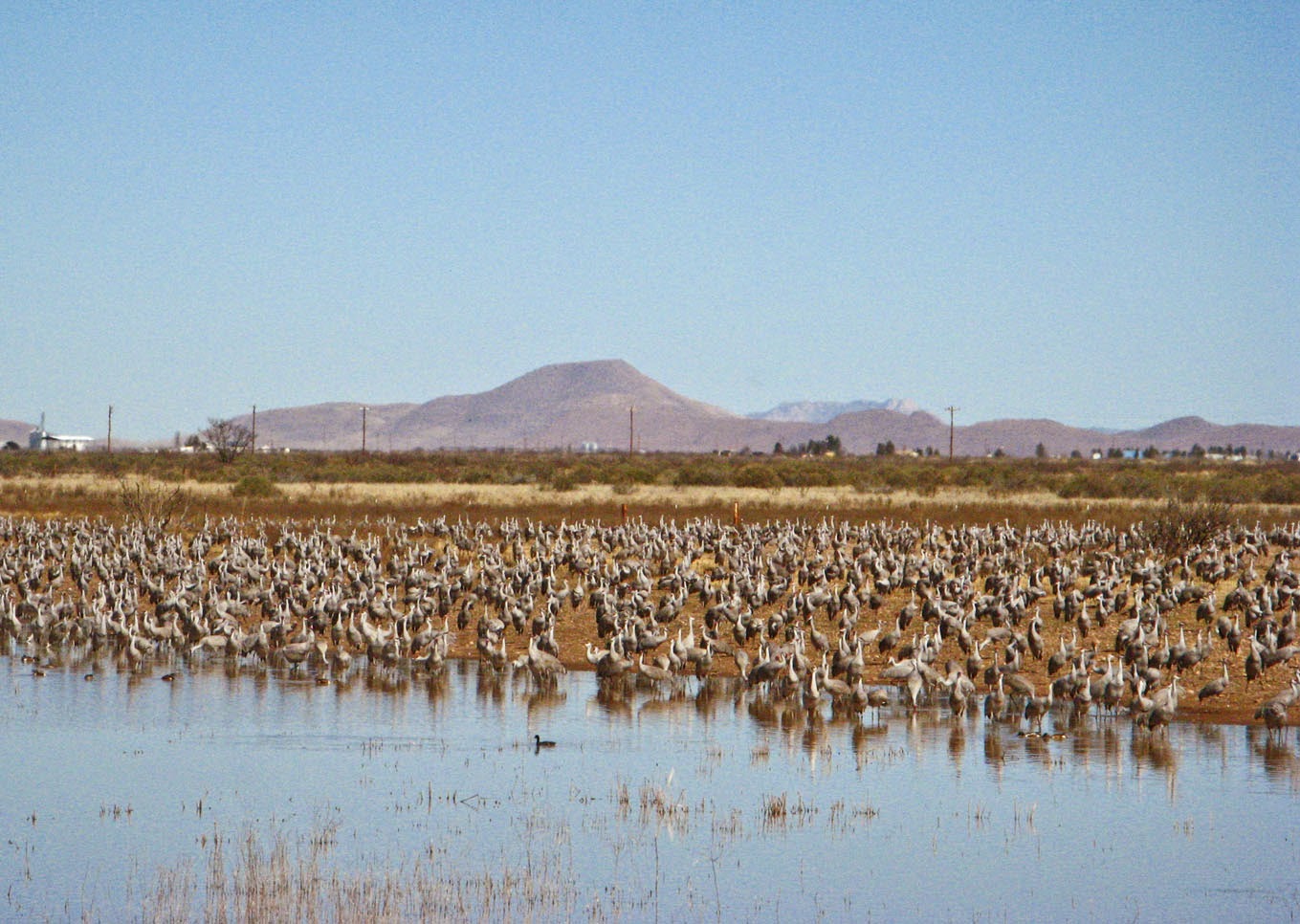 |
| one section of the shore where we watched at 11 |
they were spread along 2 shores, clustered in
groups, standing, squawking. A fantastic, fascinating, fabulous spectacle….
On our way back, we stopped for lunch in Elfrida at “The Last Stop” Bakery
and Café.
 |
| Elfrida |
The owner was very friendly, and food wonderful- everything from the
burger, the buns, and tortillas to the salsa was freshly made. I wanted to see
a ghost town, so we drove to Gleeson- marked on the map as a “Ghost Town”. What
a Bust! There were the ruins of one
house,
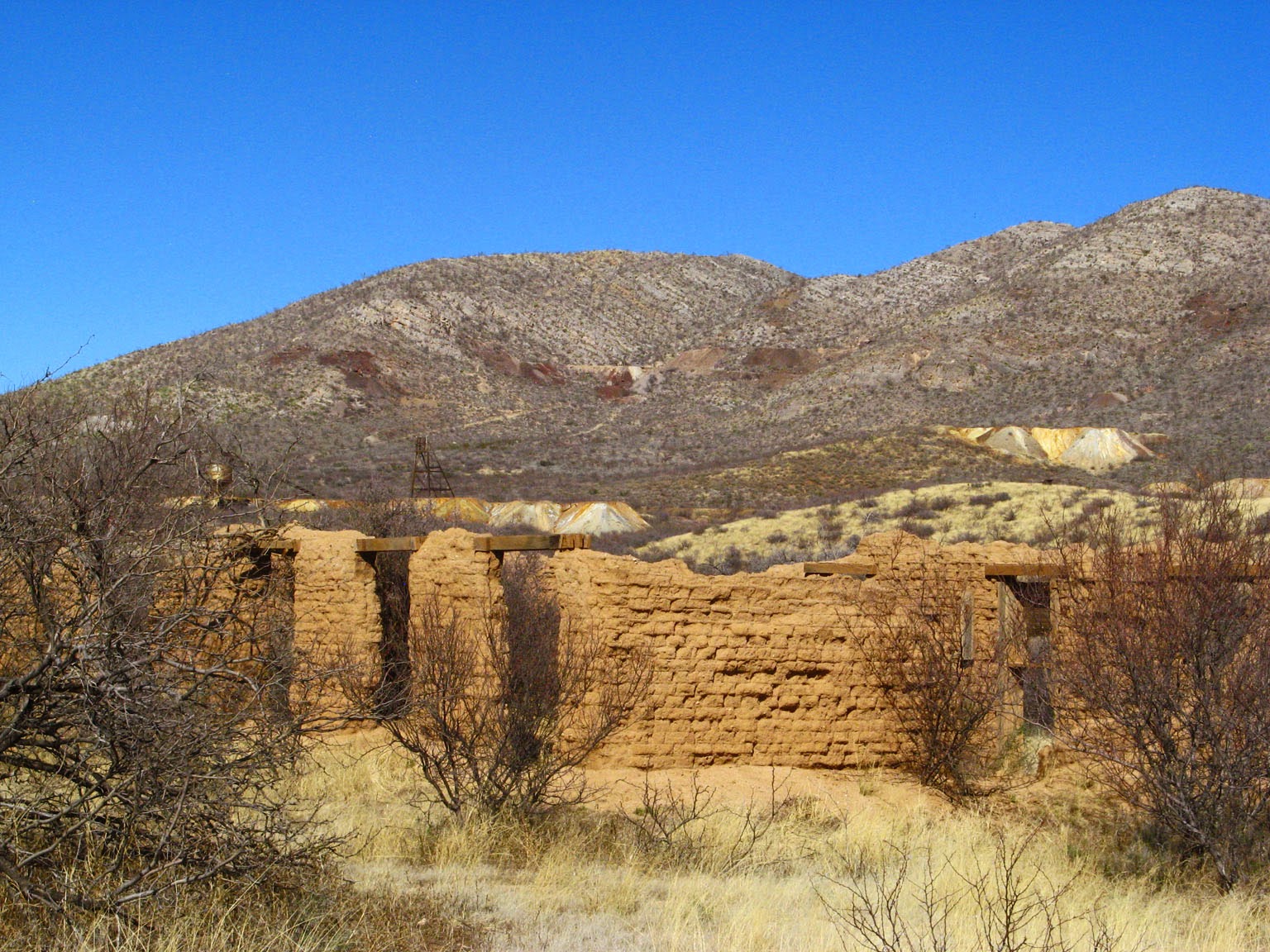 |
| one house... |
and empty large building further up the road,
 |
| an abandoned building... |
and a building marked
“Gleeson Jail –Open”.
 |
| and a jail, with a sign asking for pictures or information about Gleeson... |
Beautiful scenery,
with wide fields, hills, and layers of mountains, but no arrows, markers or
directions. The road wound through the hills
 |
| An Arroyo- a dry river bed |
and came out right in Tombstone,
so we stopped again at Wyatt’s Hotel and Coffee House. We started talking to
the manager, from England, who told us that two years ago this was a building
slated to be torn down. His friend from England bought it, and the [now]
manager and a local crew gutted it and completely rebuilt it into 3 beautiful
hotel suites decorated with period furniture, a Coffee House, and a
Saloon-Theatre where they have daily reenactments of gunfights and life in the
“Wild West”. That night we went to a
great Italian Restaurant in Benson with a couple from Colborne, ON.
Next day was pack-up, and travel to Catalina State Park in NE Tucson. We
hadn’t seen a cloud for ten days; the weather has been warm and sunny during
the day. We love this park, right at the foot of the Santa Catalina Mountains.
 |
| There were 5 Airstreams one day |
This time we had a real site in B loop. Sites are wide and well-spaced, with a
paved pad. Washrooms rivalled Picacho Peak, huge showers, completely tiled,
even the bench, and spotless. We were able to get both Tucson and Phoenix TV
stations over the air.
We spent one day visiting Tucson Visitors’ Centre
 |
| Square right beside the Convention Centre |
by the Convention Centre
downtown, having lunch in the Old Town Artisans Café,
 |
| The café is in the centre of a block of shops |
then walking part of the
Turquoise Trail around downtown Tucson.
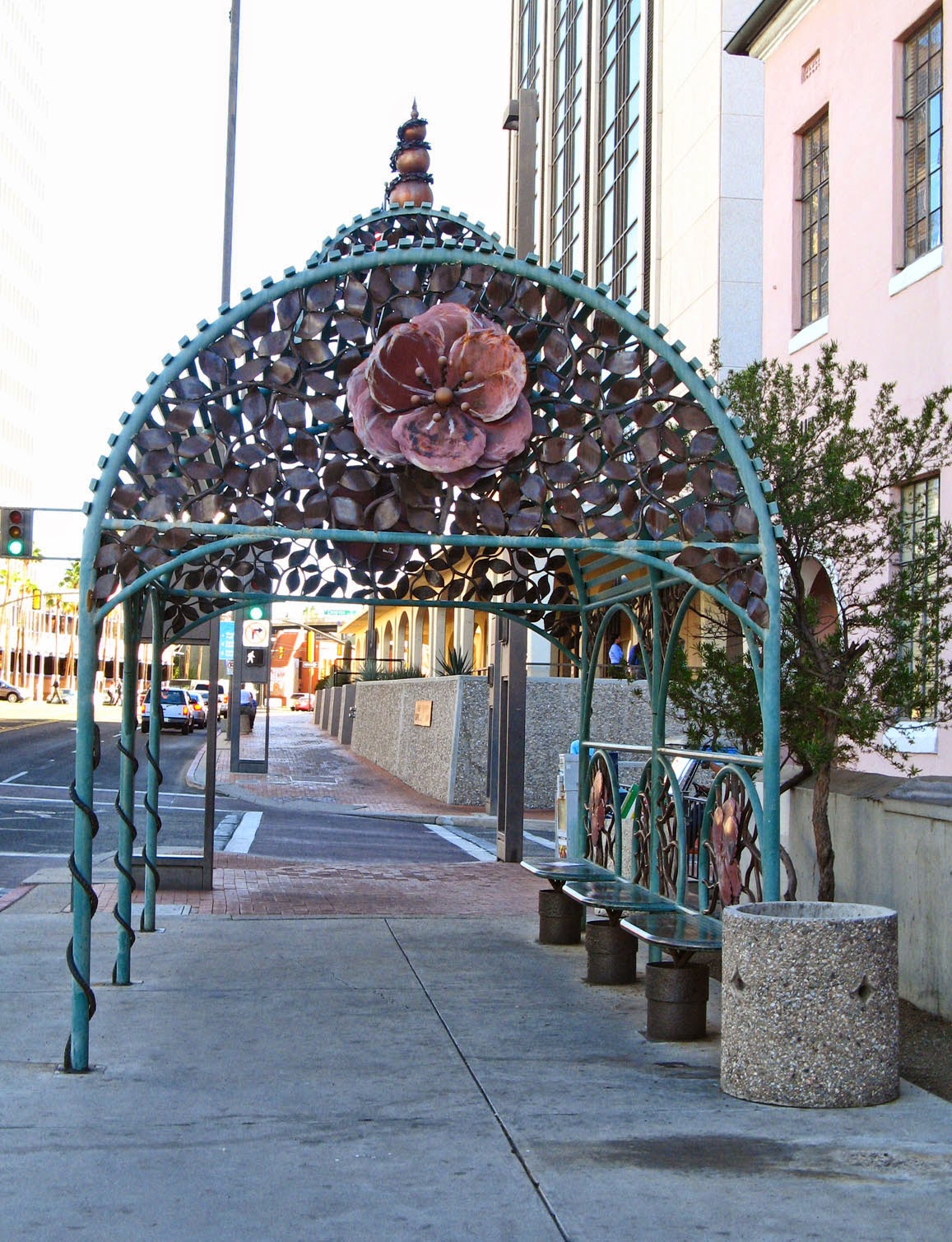 |
| A bus stop downtown |
The old Pima County Courthouse is a
magnificent building, and an interesting contrast to the new office buildings
in the area.
 |
The Central section
|
 |
| The front courtyard and wings |
 |
| The Old and new architecture in downtown Tucson |
Another day we drove to the Saguaro –West Tucson Mountain District of the Saguaro
National Park. We went through the museum and Visitors’ Centre, walked along
the wash around the Visitors’ Centre
and then drove up the mountain on the Bajada
Loop scenic drive, which winds up the mountain side on an unpaved dirt road.
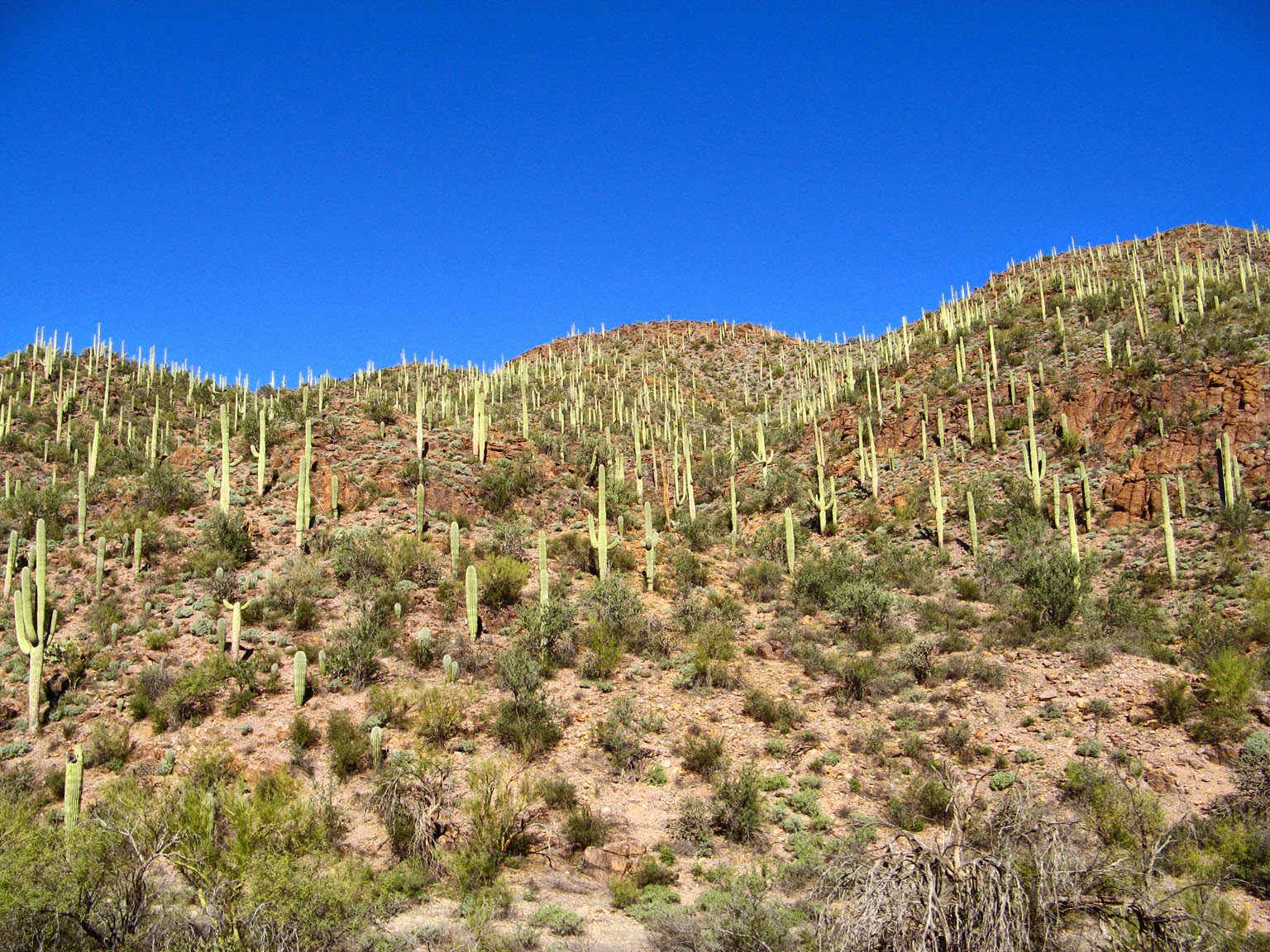 |
| Saguaro National Park |
There are a lot of hiking trails, and a few picnic areas. The Saguaro comes in
many shapes. It is just a tall spike until it is 70-75 years old, then it
starts to grow arms. They live for 175 to 200 years.
 |
| Only the one on the left is over 75 years |
 |
| some Saguaros have cristates |
Of the millions of little
black seeds that are produced, those falling near a nurse tree, like the Palo
Verde and Mesquite,
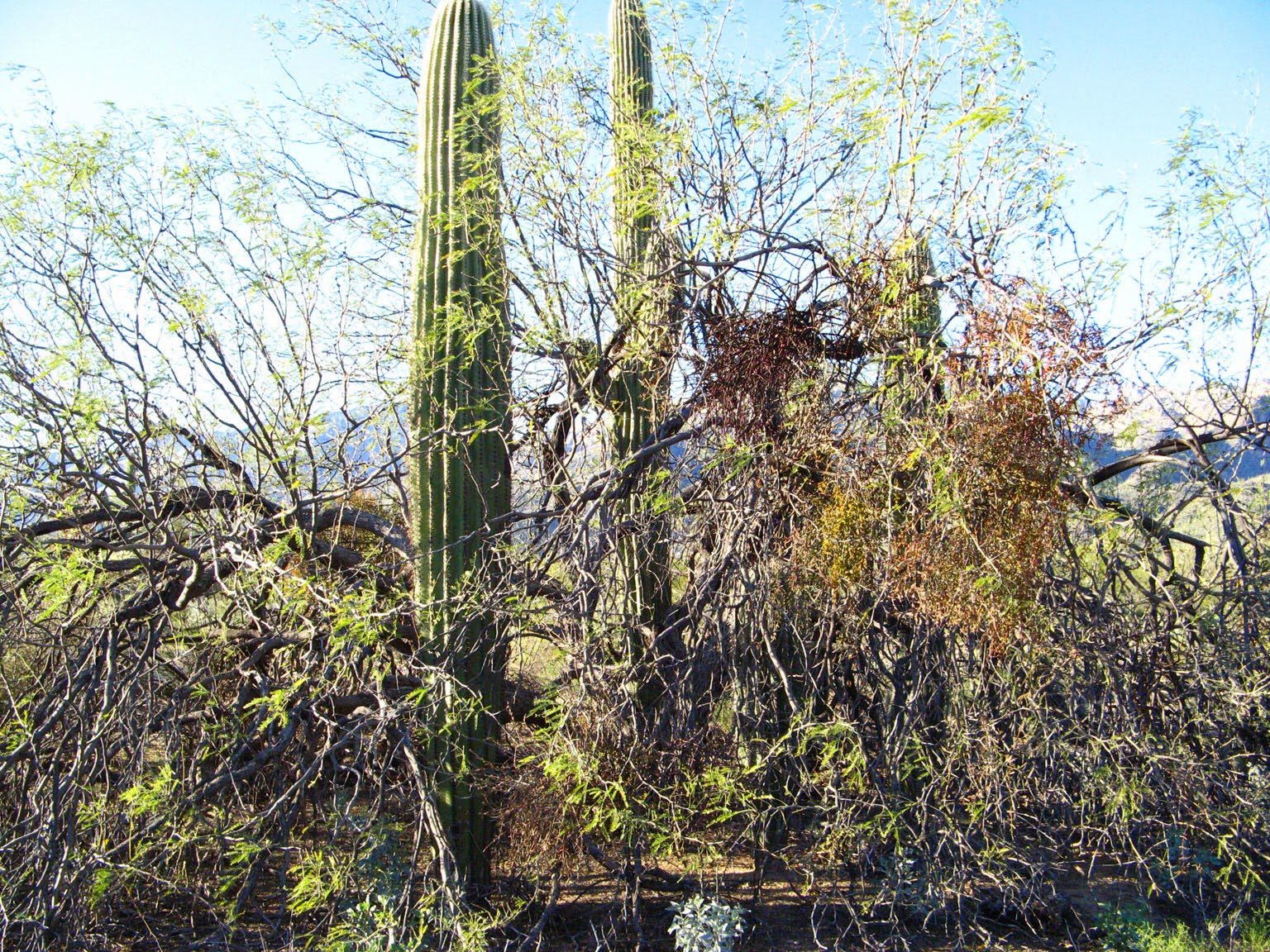 |
| A saguaro growing in a mesquite nurse tree |
have the best chance of survival.
 |
| The variety of cacti outside the Visitors' Centre |
These cacti grow best on
‘bajadas- the gently sloping outwash plains at the foot of desert mountains, and
do not tolerate cold well. Their roots may spread as wide as the cactus is
tall, but grow only three inches deep.
In the afternoon, we went to the Arizona Sonora Desert Museum and were just
in time to see the raptor free flight demonstration.
 |
| The Harris Hawk |
We wandered around the Desert
Loop Trail, and the Desert Grassland section,
 |
| Harris Antelope squirrel |
 |
| Our favourite- the Roadrunner |
we had missed last year.
We revisited the javelinas-“we are not pigs” –
section,
 |
| The Javelina just hanging out! -usually they are hiding.... |
and we had to revisit the Hummingbird Aviary and the Walk-In Aviary.
This is a wonderful facility-zoo, aquarium, garden, museum, and gallery all in
one, with of course the obligatory, fabulous gift shop.
Another big day was a visit to the Mission San Xavier del Bac and to the
Titan Missile Museum. This magnificent sparkling white Mission, founded in 1692
by a Jesuit pioneer, and built in 1700’s is the finest example of Spanish
Colonial architecture in the US.
 |
| The Mission rises out of the desert |
 |
| The left tower was not finished as originally money ran out |
Gracefully blending Moorish, Byzantine and
late Mexican Renaissance, it rises out of the desert south of Tucson on the
Papago Indian settlement.
 |
| Interior courtyard |
 |
| Chapel at he West end |
The floor plan resembles a Latin cross. It is a
structure of arches and domes with wood only used in window and door frames- a
remarkable building made of lime, sand, clay and rock, with walls 33 inches
thick. Artists from Central Spain completed the inside.
 |
| Click on these to see the magnificent detail |
It has undergone
several major repairs, due to earthquakes, lightning strikes and ravages of
time and weather.
The Titan Missile Museum, is a Titan missile, with its ‘feet’ thirteen
stories underground in a silo.
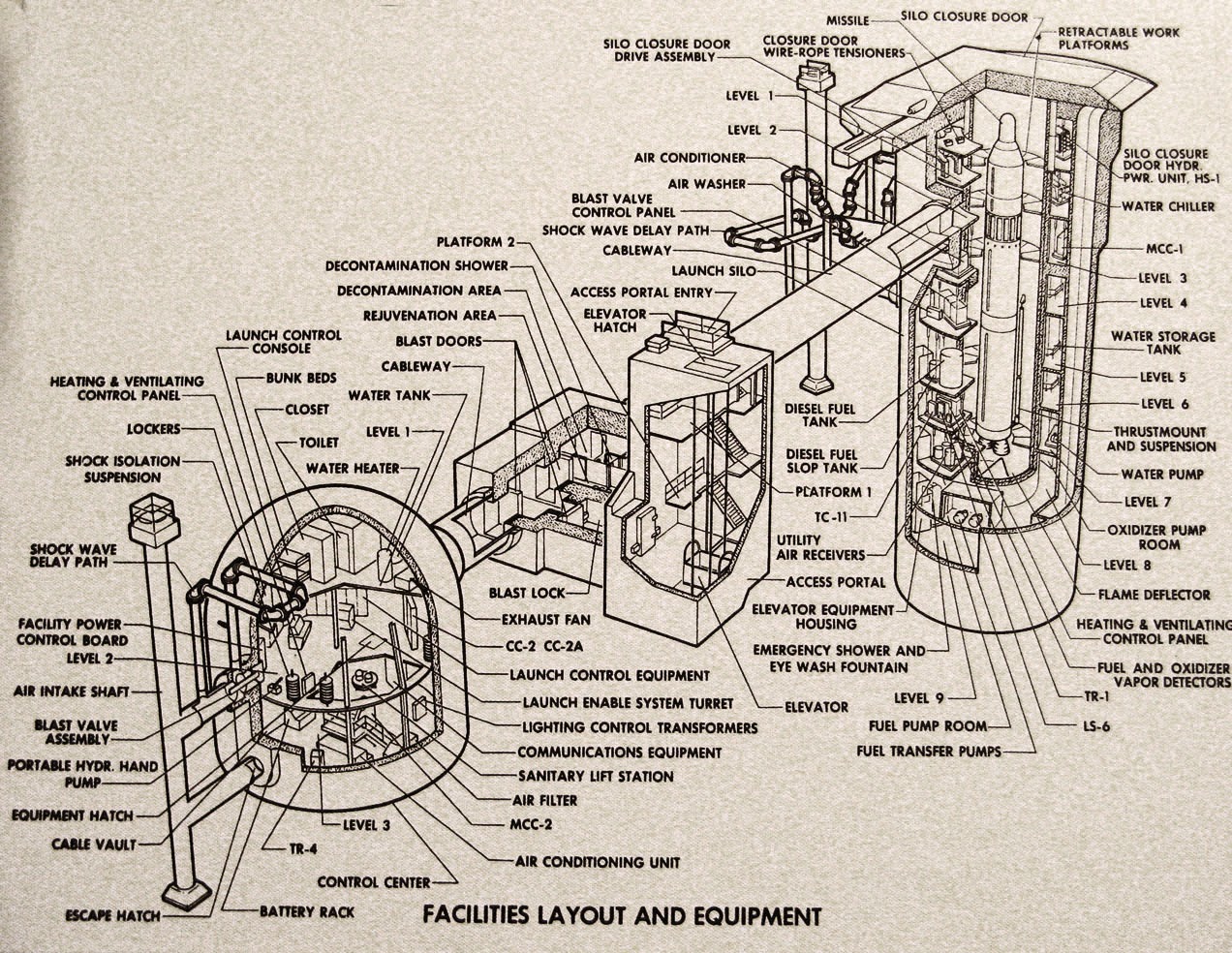 |
| Schematic of underground facility, Control Room to left, Missile to the right |
 |
| The tunnel from the Control Room to the Missile |
The small museum on the surface, tells the story
of the Titan missiles during the Cold War.
You then have a chance to go down 55
steps to the Control Room,
 |
| The Control Room |
about half way down the missile. There are checks
and counter checks before you get there, however. There are a series of
telephone calls which must be made and a variety of ways to identify your
legitimacy- from a password- handed to you just as you are ready to go down,
then burned as soon as it is used, to a specific number of minutes you can take
to go from one check-in point to another. Each crew was on duty for 24 hours,
and had to remain in pairs at all times except when in the lunch/rest room. All
commands in the firing process had two parts, the responsibility of two
separate crewmen- there were 2 locks on the safe
 |
| 2 locks, 2 keys |
with the code book inside, 2
keys, 2 steps to the firing process, carefully timed. This is the only missile silo
still intact. All others were destroyed as part of the SALT treaty with the
Soviet Union - imploded into themselves and filled in with rock and rubble. The
cover over the missile silo has to be partially unsealed and covered with glass,
so Russian satellites and inspectors can be sure it is not able to be used,
 |
| Part cement, part glass over the missile |
 |
| Above ground, the glass top over the Titan Missile |
and
the nose cone has a square opening cut into it to demonstrate that it’s not
armed with a 9 megaton hydrogen bomb.
 |
| Looking through the glass into the launch duct |
The main security outside is a series of
pairs of huge doppler radar motion sensors
which bring the military police when
set off. One missile silo’s intruder-warning was regularly set off by their
friendly mountain lion who came to lie on the warm concrete silo cover each
day. Our docent had worked at a missile site, so was able to explain in great
detail and answer questions.
Much of our time at Catalina SP was spent talking to other campers, driving
around the area, going to LA Fitness to work on our circuits or aquafit,
finding wifi at McDonalds or Starbucks, and shopping for food.
The last trip we took was to Sabino Canyon by Mount Lemon. We got there in
late afternoon and took an open shuttle bus up into the canyon over the Sabino
Creek several times
 |
| A beautiful Sabino Creek |
– some of them over flooded bridges- then up the side of
the canyon.
There are nine stops where passengers can get off and hike or walk
to another stop for the ride back to the Visitors’ Centre.
It was pack-up for travel once again. We were only taking a short drive up
the I-10 to Casa Grande to the Palm Creek RV Resort…

No comments:
Post a Comment